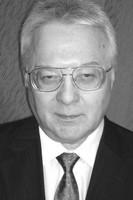Effects of varied-pace walking practices on cardio-respiratory system functionality rates of senior residents of Yugra North
Фотографии:
ˑ:
Teoriya i praktika fizicheskoy kultury №1 2018, pp.89-92
Dr.Biol., Professor S.I. Loginov1
S.G. Logvinova2
PhD A.S. Kintyukhin1
1Surgut State University, Surgut
2Lyceum no. 3, Surgut
Subject to the study were senior permanent residents of Yugra North (n=24 including 11 males and 13 females aged 68.2±5.6 years). The study was designed to analyze benefits of treadmill walking practices with paces varying within 2-7 km/h and stepped by 1 km/h. The oxygen demand (VO2 ml/min) rate, minute ventilation (Ve, l/min) rate, exhaled oxygen content (КО2, %) and heart rate (HR, beats per min) were obtained using FitmatePro Metabolograph system and a HR test system. The tests found the above rates growing with the growing pace (t test, p<0.05), with the only exclusion for КО2. We also found a close correlation of Ve with VO2 in the treadmill practices (r=0.86; p=0.0000) and HR (r=0.81; p=0.0000); and the finding gives the grounds to recommend equation VO2 = 81.7 + 29.3 Ve for the energy cost rating for the female group health improvement practices; and equation VO2 = -57.2 + 31.0 Ve for the male group health improvement practices. The regression equations factoring in the study data may be applied to control and manage physical loads in the health improvement practices in application to the senior residents of Yugra North. We recommend the lung ventilation being rated per 1 min by a dry spirometer followed by the rate being used to compute the oxygen demand rate using the above formulae.
Keywords: controlled walking practice, treadmill, HR, oxygen demand, lung ventilation, linear regression equation.
References
- Loginov S.I., Kintyukhin A.S., Malkov M.N. et al Vliyanie khodby s raznoy skorostyu na pokazateli kardiorespiratornoy sistemy studentov v usloviyakh Yugry [Effects of variable-speed walking practices on cardiorespiratory system performance rates in Yugra students]. Teoriya i praktika fiz. kultury, 2016, no. 9, pp. 86–88.
- Loginov S.I., Kozlova V.V., Gorlenko V.A. et al. Vliyanie fizicheskikh uprazhneniy na parametry kardiorespiratornoy sistemy zhenschin i muzhchin vtorogo zrelogo vozrasta v usloviyakh KhMAO-Yugry. [Effect of physical exercises on cardiorespiratory characteristics of women and men in second adulthood in conditions of KhMAR-Yugra] Teoriya i praktika fiz. kultury, 2013, no. 11, pp. 88–92.
- Astrand P.-O., Saltin B. Maximal oxygen uptake and heard rate in various types of muscular activity. // J. Appl. Physiol. 1961. V. 16. P. 977-981.
- Berryman N., Bherer L., Nadeau S., Lauzière S. Lehr L., Bobeuf F., Kergoat M.J., Vu T.T., Bosquet L. Relationships between lower body strength and the energy cost of treadmill walking in a cohort of healthy older adults: a cross-sectional analysis. // Eur. J. Appl. Physiol. 2017. V. 117. №1. P. 53–59. doi: 10.1007/s00421-016-3498-4.
- DeLani J.P., Kelley D.E., Hames K.C., Jakicic J.M., Goodpaster B.H. Effect of physical activity on weight loss, energy expenditure, and energy intake during diet induced weight loss. // Obesity (Silver Spring). 2014. V. 22. N 2. P. 363-370. Doi: 10.1002/oby.20525.
- Fair A.M., Montgomery K. Energy balance, physical activity, and cancer risk. // Methods Mol. Biol. 2009. Vi. 472. P. 57-88.doi:10.1007/978-1-60327-492-0_3.
- Gastinger S., Nicolas G., Sorel A., Sefaty H., Prioux J. Energy expenditure estimate by heart-rate monitor and a portable electromagnetic coils system. // Int. J. Sport Nutr. Exerc. Metab. 2012. V. 22. N 2. P. 117-130.
- Gastinger S., Sorel A., Nicolas G., Gratas-Delamarche A., Prioux J. A Comparison between Ventilation and heart Rate as indicator of Oxygen Uptake during Different intensities of Exercise // J. Sports Sci. Med. 2010. V. 9, N 1. P. 110-118.
- Saltin B., Astrand P.-O. Maximal oxygen uptake in athletes. J. Appl. Physiol. 1967. V. 23, N 3. P.353-358.
- Wasserman K., Beaver W.L., Whipp B.J. Gas exchange theory and the lactic acidosis (anaerobic) threshold. // Circulation. 1990. V. 81. P. 14-30.




 Журнал "THEORY AND PRACTICE
Журнал "THEORY AND PRACTICE